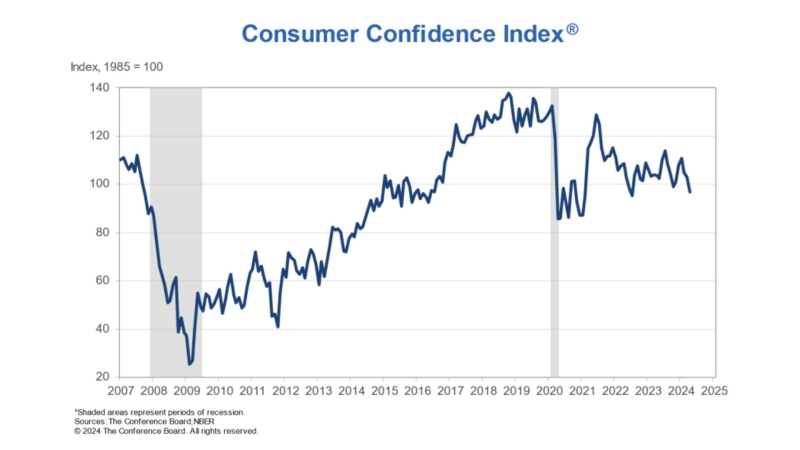
FHFA Director Says It Ain't So

Thompson denies pricing changes at Fannie, Freddie make wealthier borrowers subsidize poorer ones.
Sandra L. Thompson, director of the Federal Housing Finance Agency (FHFA), has a simple message for mortgage lenders and the public: It’s not true.
If you’ve heard, whether on a social media platform or elsewhere, that Fannie Mae and Freddie Mac are now charging higher-credit-score borrowers more so that lower-credit-score borrowers can pay less — that is, wealthier borrowers are subsidizing poorer borrowers — Thompson wants to set the record straight.
In a statement posted Tuesday on the FHFA website, she stated unequivocally that the changes announced in January to the single-family pricing framework for Fannie & Freddie (or collectively, the Enterprises) do nothing of the kind.
“Unfortunately, much of what has been reported advances a fundamental misunderstanding about the fees charged by the Enterprises, and why they were updated,” she states.
“To be clear,’ Thompson continues, “the series of steps taken by FHFA to update the Enterprises’ pricing framework will bolster safety and soundness, better ensure the Enterprises fulfill their statutory missions, and more accurately align pricing with the expected financial performance and risks of the underlying loans.”
Facilitating Access To Credit
According to Thompson, FHFA is “first and foremost a safety and soundness regulator,” and the Enterprises were chartered by Congress with a mission to provide liquidity, stability, and affordability “by facilitating responsible access to mortgage credit through their activities in the secondary market.”

To achieve that mission, she said, the Enterprises “charge fees to compensate them for guaranteeing borrowers’ mortgage payments, which in turn attracts investors across the globe to provide liquidity for the U.S. mortgage market and, ultimately, reduces interest rates for homeowners.”
She continues, “A portion of their fees are ‘upfront’ fees that are based on risk characteristics of the borrowers and the loans they are obtaining. Said differently, the Enterprises engage in risk-based pricing to, among other things, better ensure their safety and soundness, protect taxpayers, and serve their mission.”
Thompson said it had been “many years” since regulators had conducted a comprehensive review of the pricing framework for Fannie and Freddie, so FHFA launched a review in 2021.
“The objectives were to maintain support for purchase borrowers limited by income or wealth, ensure a level playing field for large and small lenders, foster capital accumulation at the Enterprises, and achieve commercially viable returns on capital over time,” she states.
FHFA, she said, took a series of steps over the past 18 months to achieve those objectives.
“First, we announced targeted fee increases for second-home loans and high-balance loans and, later, cash-out refinances,” Thompson states. “Next, we announced the elimination of upfront fees for certain groups core to the Enterprises’ mission, such as first-time homebuyers with lower incomes who nonetheless have the financial capacity and creditworthiness to sustain a mortgage. Finally, in January, we announced a recalibration of the upfront fees for most purchase and rate-term refinance loans. These actions work collectively to create a more resilient housing finance system.”
Point By Point
That last step — announcing the loan-level pricing adjustments for single-family homes — “seems to have attracted a series of recent misconceptions despite being announced over three months ago.”
Thompson then directly addresses each misconception, point by point. She states:
- Higher-credit-score borrowers are not being charged more so that lower-credit-score borrowers can pay less. The updated fees, as was true of the prior fees, generally increase as credit scores decrease for any given level of down payment.
- Some updated fees are higher and some are lower, in differing amounts. They do not represent pure decreases for high-risk borrowers or pure increases for low-risk borrowers. Many borrowers with high credit scores or large down payments will see their fees decrease or remain flat.
- Some mistakenly assume that the prior pricing framework was somehow perfectly calibrated to risk — despite many years passing since that framework was reviewed comprehensively. The fees associated with a borrower’s credit score and down payment will now be better aligned with the expected long-term financial performance of those mortgages relative to their risks.
- The new framework does not provide incentives for a borrower to make a lower down payment to benefit from lower fees. Borrowers making a down payment smaller than 20% of the home’s value typically pay mortgage insurance premiums, so these must be added to the fees charged by the Enterprises when considering a borrower’s total costs.
- The targeted eliminations of upfront fees for borrowers with lower incomes — not lower credit scores — primarily are supported by the higher fees on products such as second homes and cash-out refinances. The Enterprises’ statutory charters specifically include references to supporting low- and moderate-income families by earning returns on mortgages for these borrowers that may be less than the returns earned on other products. Indeed, Congress incorporated this into the Enterprises’ charters decades ago and it is a long-standing component of the Enterprises’ core business models.
- The changes to the pricing framework were not designed to stimulate mortgage demand. We publicly announced the objectives of the pricing review at its onset (as noted above), and stimulating demand was never a goal of our work.
Thompson states that addressing the misconceptions is important, because the Enterprises have been in conservatorship since 2008, and “have remained undercapitalized and maintain a taxpayer backstop should they confront significant losses.”
“This change,” she continued, “will better protect taxpayers in the long term and put the Enterprises on more durable footing, which will allow them to support affordable, sustainable mortgage credit across the economic cycle to the benefit of all Americans.”:
She added that the updated pricing framework will improve the safety and soundness of the Enterprises, “which will help them better achieve their mission. They will provide reliable liquidity to the market while also providing more targeted support for creditworthy borrowers limited by income or wealth. And they will do so with a pricing framework that is more accurately aligned to the expected financial performance and risks of the loans they back.”




